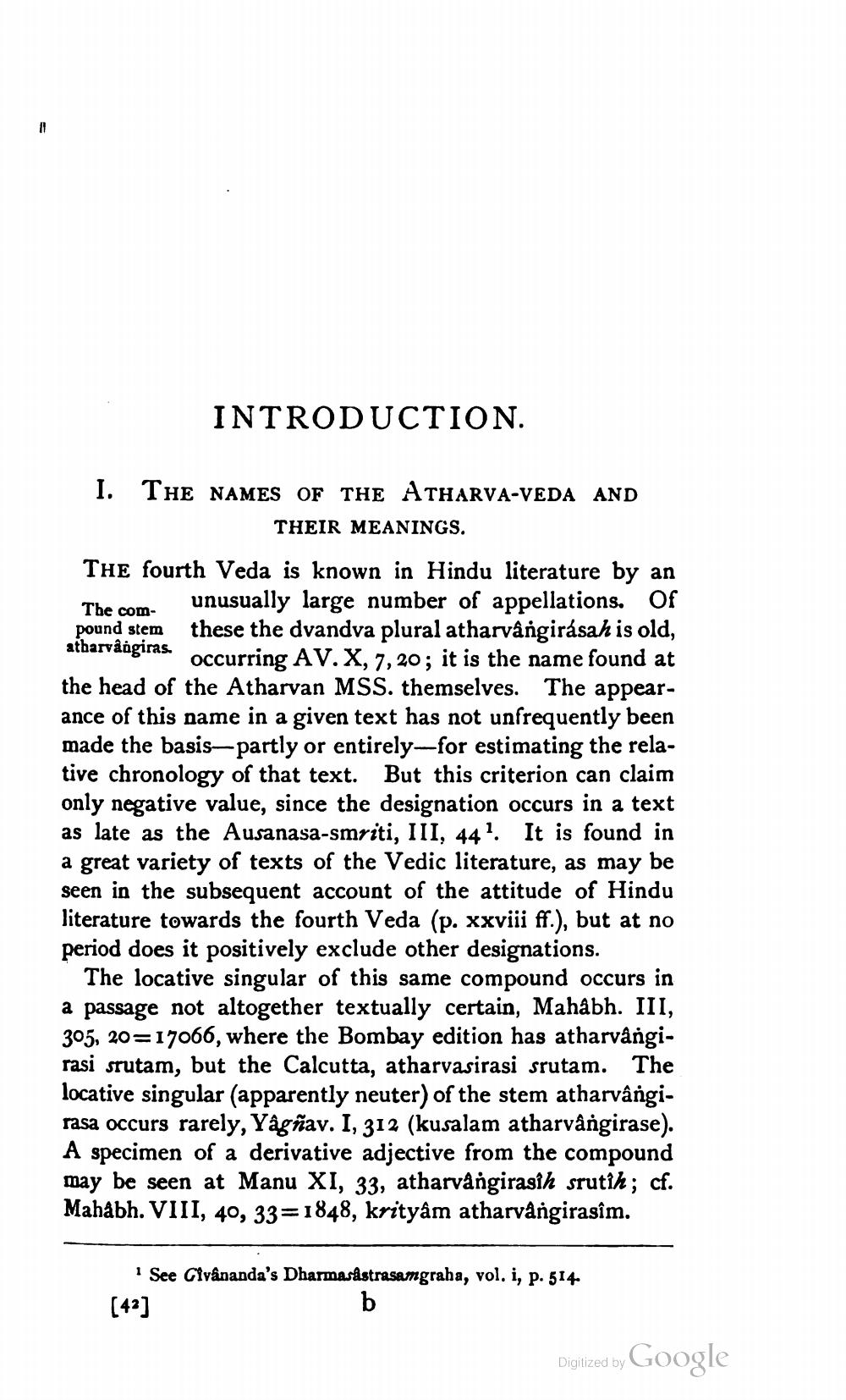________________
11
INTRODUCTION.
I. THE NAMES OF THE ATHARVA-VEDA AND
THEIR MEANINGS.
The com
THE fourth Veda is known in Hindu literature by an unusually large number of appellations. Of pound stem these the dvandva plural atharvângirásah is old, atharvângiras. occurring AV. X, 7, 20; it is the name found at the head of the Atharvan MSS. themselves. The appearance of this name in a given text has not unfrequently been made the basis-partly or entirely-for estimating the relative chronology of that text. But this criterion can claim only negative value, since the designation occurs in a text as late as the Ausanasa-smriti, III, 441. It is found in a great variety of texts of the Vedic literature, as may be seen in the subsequent account of the attitude of Hindu literature towards the fourth Veda (p. xxviii ff.), but at no period does it positively exclude other designations.
The locative singular of this same compound occurs in a passage not altogether textually certain, Mahâbh. III, 305, 20=17066, where the Bombay edition has atharvângirasi srutam, but the Calcutta, atharvasirasi srutam. The locative singular (apparently neuter) of the stem atharvângirasa occurs rarely, Yâgñav. I, 312 (kusalam atharvângirase). A specimen of a derivative adjective from the compound may be seen at Manu XI, 33, atharvângirasih srutîh; cf. Mahâbh. VIII, 40, 33=1848, krityâm atharvângirasîm.
1 See Givânanda's Dharmasastrasamgraha, vol. i, p. 514. b
[42]
Digitized by Google




